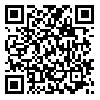BibTeX | RIS | EndNote | Medlars | ProCite | Reference Manager | RefWorks
Send citation to:
URL: http://ijhe.tums.ac.ir/article-1-188-en.html
Background and Objectives: Heavy Metals in Water resources is one of the most important environmental problems of countries. Up to now various methods of removing of these metals is considered, which is including using of low prices materials. In this study the potential of banana shells was assessed for adsorption of heavy metal ions such as Pb and Cd from aqueous solution.
Materials and Methods: Banana shells were pretreated separately with 0.4 mol/L NaOH, 0.4 mol/L HNO and distilled water and their adsorption ability were compared. Batch adsorption experiments were carried out as a function of the initial ion concentration, pH and adsorbent dosage. Adsorption isotherms of metal ions on adsorbents were determined and correlated with common isotherm equations such as Lungmuir, Freundlich and BET models.
Results: The maximum adsorption capacities were achieved by alkali modified banana shells (36 mg/g) for Pb and by acidic modified banana shells (16 mg/g) for Cd. Experimental results showed that the best pH for adsorption was 6 and the adsorption values decreased with lowering pH. Isotherm models indicated best fit for Freundlich model for modified banana shells.
Conclusion: In comparing the parameters of models, it was observed that the capacity of banana shells for adsorption of lead is higher than for adsorption of cadmium, but the adsorption of cadmium is stronger than the adsorption of lead.
Received: 2008/10/18 | Accepted: 2008/11/24 | Published: 2009/02/28
| Rights and Permissions | |
 |
This work is licensed under a Creative Commons Attribution-NonCommercial 4.0 International License. |





